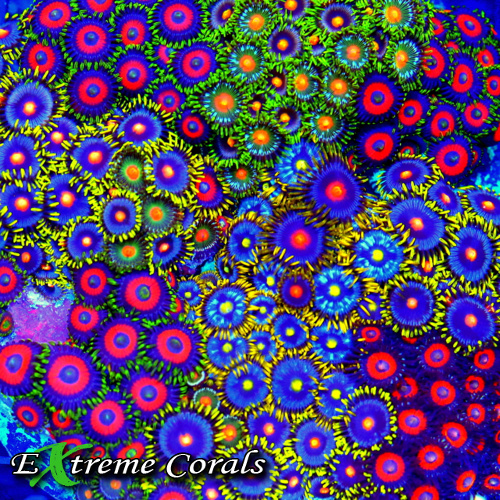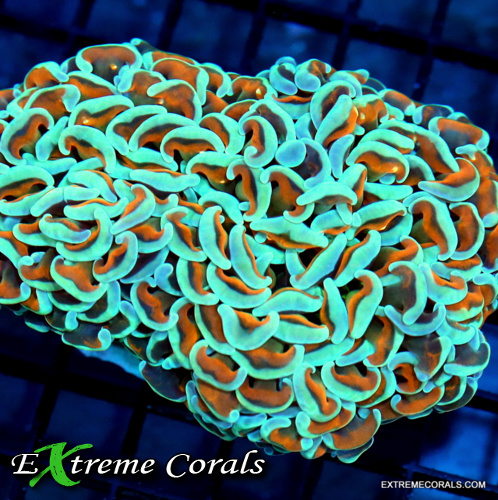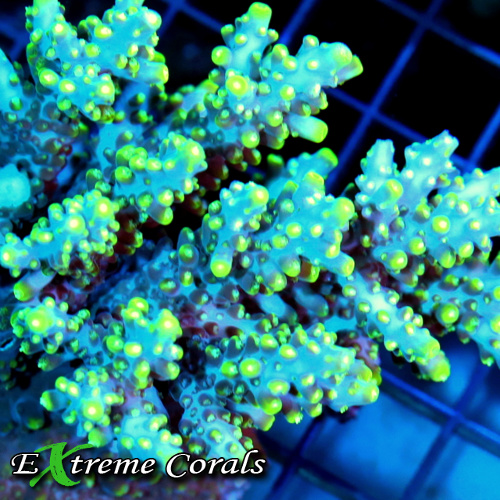Extreme Corals News and Updates
Building a Thriving Coral Ecosystem: Essential Tips for Aquarium Enthusiasts
From Basics to Brilliance: Your Guide to a Flourishing Coral Aquarium
Diving into the world of aquariums is exciting and rewarding, especially when creating a coral ecosystem. This guide covers the basics of coral care, the importance of water quality, and the best coral species for beginners and experts. Learn how to build and maintain a flourishing coral environment in your tank
by scott Shiles • July 18, 2024
Reef Tank Maintenance, Reef Tank Equipment
Diving into the world of aquariums can be exciting and rewarding, especially when you're looking to create a vibrant coral ecosystem. Coral reefs are not only beautiful but also play a crucial role in the marine environment. Whether you're a beginner or an experienced hobbyist, this guide will walk you through the essentials of building and maintaining a flourishing coral ecosystem in your aquarium.
Understanding the Basics of Coral Ecosystems
Before diving into the intricacies of coral care, it's essential to grasp the fundamental aspects of coral ecosystems. Corals are marine invertebrates that belong to the phylum Cnidaria. They come in various shapes, sizes, and colors, adding diversity and beauty to any aquatic setup. In nature, corals form the foundation of vibrant reef ecosystems, providing shelter and food for numerous marine organisms.
The relationship between corals and zooxanthellae, a type of algae living within their tissues, is vital for their survival. These algae not only give corals their vibrant colors but also engage in photosynthesis, producing energy that benefits both the algae and the coral. Understanding this symbiotic relationship is key to providing the optimal conditions for coral growth and health.
Coral reefs are often referred to as the rainforests of the sea due to their high biodiversity and ecological importance. They support a vast array of marine life, from tiny plankton to large predators like sharks. By recreating a miniature coral ecosystem in your aquarium, you can witness the beauty and complexity of these remarkable underwater habitats up close.
Maintaining stable water parameters, providing adequate lighting, and ensuring proper water flow are essential for the well-being of corals. Water quality plays a crucial role in coral health, as any fluctuations in temperature, salinity, or nutrient levels can stress or harm these delicate organisms. By mimicking natural reef conditions, you can create a thriving environment for your corals to flourish.
In addition to understanding the biological aspects of corals, it's essential to appreciate the importance of conservation and sustainability in coral reef ecosystems. Coral reefs face numerous threats, including climate change, overfishing, and pollution. As aquarium enthusiasts, we have a responsibility to promote coral-friendly practices and support initiatives that aim to protect these fragile and invaluable ecosystems.
Choosing the Right Coral Species for Your Setup
Selecting suitable coral species for your aquarium is a critical step in building a successful coral ecosystem. Different coral species have varying care requirements, including lighting, water flow, and nutritional needs. It's essential to research and understand the specific conditions that each coral species thrives in to create a harmonious and balanced environment for your corals.
Soft corals, such as Zoanthids and Mushroom corals, are ideal for beginners due to their hardy nature and low maintenance requirements. These corals come in a variety of colors and shapes, adding visual interest to your tank.

LPS (Large Polyp Stony) corals, such as Hammer corals and Torch corals, are another popular choice known for their beautiful fluorescent colors and extended polyps.

SPS (Small Polyp Stony) corals, including Acropora and Montipora species, are more demanding in terms of lighting and water quality but are prized for their intricate structures and vibrant growth patterns. Before adding any coral species to your aquarium, ensure that your tank parameters align with the requirements of the corals you intend to keep to prevent stress or potential health issues.

When selecting corals, consider factors such as compatibility, growth rates, and space availability in your tank. Some coral species are aggressive and can sting or overgrow neighboring corals, leading to territorial disputes. Planning your coral selection thoughtfully and observing their interactions can help you create a harmonious and visually appealing coral community in your aquarium.
Creating the Ideal Environment for Coral Growth
Establishing the perfect environment for coral growth involves replicating the natural conditions found in coral reef ecosystems. Adequate lighting is crucial for photosynthetic corals, as it provides the energy needed for growth and pigment production. LED lights are popular choices for aquarium lighting due to their energy efficiency and customizable settings.
Water flow is also essential for corals, as it helps remove waste, deliver nutrients, and prevent sediment buildup on coral surfaces. Powerheads and wavemakers can mimic natural wave patterns and create gentle turbulence in the water, simulating the reef environment and promoting coral health and growth.
Maintaining stable water parameters, including temperature, salinity, pH, and nutrient levels, is critical for the overall well-being of corals. Regular water testing and quality monitoring are essential to ensure a healthy and stable aquatic environment for your coral inhabitants. Water changes and proper filtration play a significant role in maintaining water clarity and quality.
In addition to physical parameters, providing a diverse and balanced diet for your corals is essential for their growth and vitality. Corals can feed on plankton, phytoplankton, and dissolved organic matter in the water. Supplementing their diet with coral-specific foods enriched with vitamins and trace elements can enhance their coloration and promote healthy tissue growth.
Maintaining a clean and well-aerated substrate, regular equipment maintenance, and monitoring for any signs of disease or stress are crucial aspects of creating an optimal environment for coral growth. By investing time and effort in maintaining water quality and system stability, you can ensure the long-term health and vibrancy of your coral ecosystem.
Maintaining Water Quality and Balance
Monitoring and managing water quality parameters is a continuous task for aquarium enthusiasts looking to maintain a thriving coral ecosystem. Regular testing for ammonia, nitrites, nitrates, phosphates, and alkalinity levels is essential for identifying any fluctuations or imbalances in water chemistry that can impact coral health.
Utilizing a reliable test kit and keeping track of water parameters can help you make informed decisions about water changes, supplement dosing, and equipment adjustments to maintain stable conditions in your aquarium. Water changes, performed with high-quality salt mix and purified water, can help replenish vital trace elements and maintain optimal water chemistry.
Maintaining proper calcium, magnesium, and alkalinity levels is crucial for promoting coral calcification, skeleton formation, and overall coral health. Calcium reactors, dosing pumps, and specialized supplements can help you maintain these essential parameters within the recommended ranges to support coral growth and coloration.
Regular maintenance tasks, such as cleaning debris and algae, siphoning detritus from the substrate, and inspecting equipment for any issues, are vital for preserving water quality and clarity in your aquarium. Monitoring temperature fluctuations, water flow patterns, and potential sources of contamination can help you prevent common water quality issues and ensure a healthy environment for your corals.
By staying proactive and attentive to your aquarium's water quality, you can create a stable and balanced environment that promotes the well-being and vibrancy of your coral inhabitants. Investing time and effort in proper maintenance practices and monitoring key parameters will help you enjoy a stunning and thriving coral ecosystem in your own home.
Nurturing Your Underwater Paradise
As you strive to build a thriving coral ecosystem in your aquarium, remember that patience, attention to detail, and a deep understanding of the needs of coral species are key. By implementing the tips and best practices outlined in this guide, you can create a stunning underwater world that not only enhances the aesthetic appeal of your aquarium but also provides a safe and healthy habitat for your coral inhabitants.

